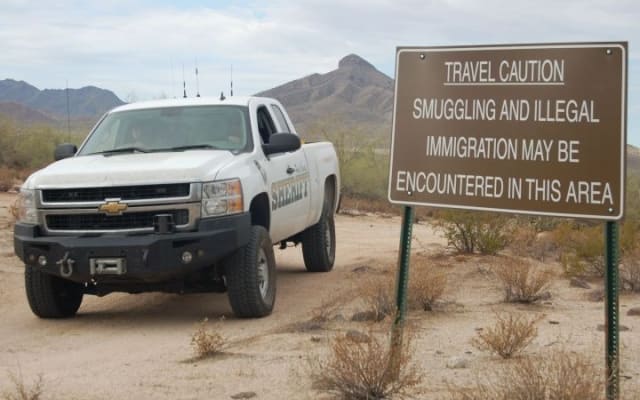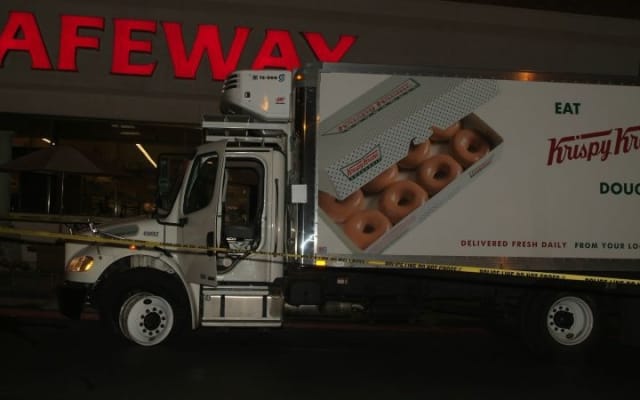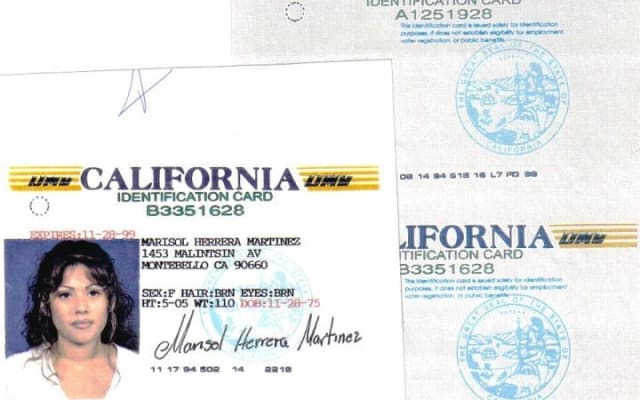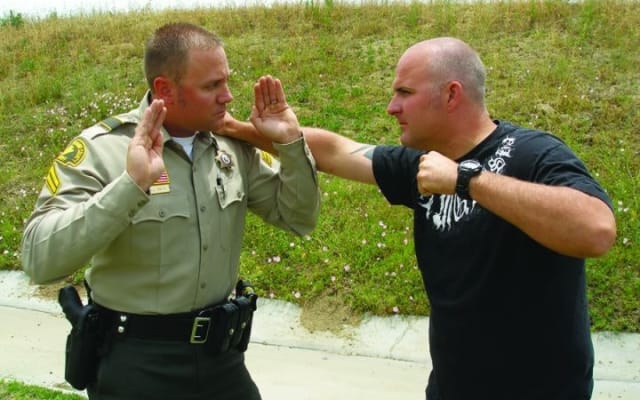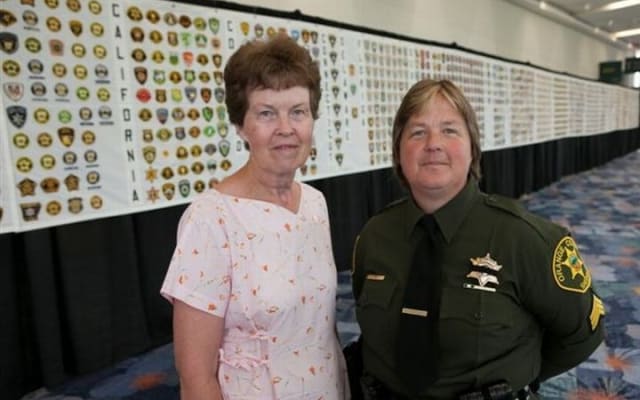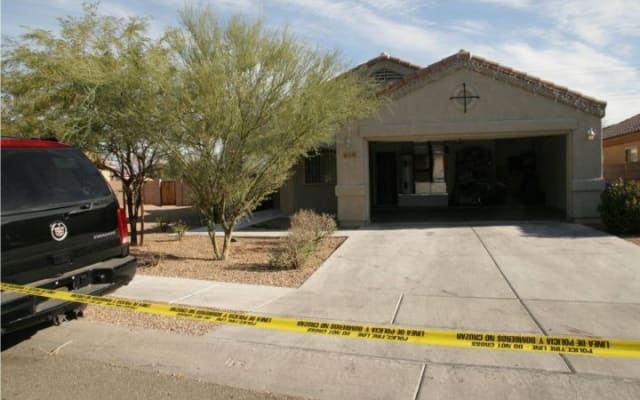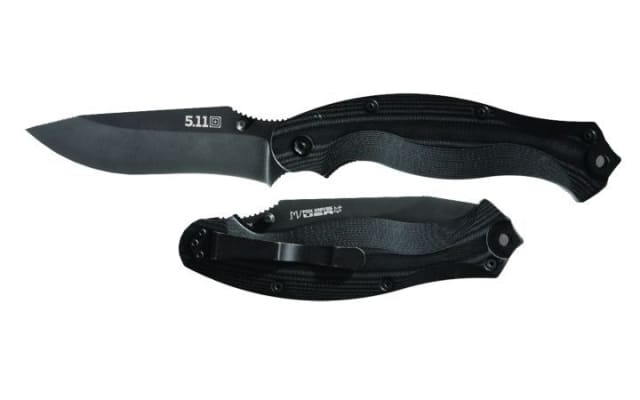Earlier this year, a regional SWAT team led by deputies with the Pinal County (Ariz.) Sheriff's Office took POLICE Magazine into the Vekol Valley in the Arizona desert to show one way smugglers bring narcotics across the U.S.-Mexico border. Smugglers often use illegal immigrants as drug mules to carry 25-pound marijuana bundles using makeshift "backpacks" of rope and cut strips of Mexican blankets to lessen discomfort. Listen to our podcast, "Tracking Smugglers in Southern Arizona," with Pinal County Sheriff's Sgt. Matt Thomas. Photos by Paul Clinton.

Det. James Peters of Scottsdale (Ariz.) PD SWAT responded to a Safeway grocery on April 23, 2006, following a multi-agency pursuit of suspect Daniel Brown, who had scuffled with a patrol officer while attempting to steal a BMW. Brown then jacked a Krispy Kreme delivery truck and led officers to the Safeway, where he crashed through the front doors and then took a senior citizen hostage with a handgun. Peters ended the threat with two well-placed shots. Read the full story of this "Shots Fired." Photos courtesy of Scottsdale PD. Warning: Gallery contains a graphic image.

Green lasers are the rage this year in weapon-mounted lights. Why? If you were to set a green laser and a red laser side by side in a dark room, you'd hardly notice the difference. The green systems really shine in daylight or moderately bright environments. Our eyes see images in a defined spectrum from near infrared to near ultraviolet. Red is at the far edge of the spectrum close to infrared. But green is right smack dab in the middle of that spectrum, which is the most efficient frequency for the human eye. Read "Lights and Lasers: It's Easy Being Green."

Having a firm grip on your semi-automatic handgun is key for several reasons, the most important of which is to avoid what's commonly called "limp wristing" the gun. When a shooter has a weak or loose grip on the gun, it usually results in the firearm not cycling properly, causing the gun to jam. A firm grip will also help you on assignments, where you need to fire from a marine platform. Read "Perfecting Your Handgun Grip" for more. Photos courtesy of Michael Rayburn.

Street gangs have become very adept at creating convincing false documents that can pass an officer's cursory inspection. Advanced computers, scanners, and color printers make detection more challenging, and traffickers often use fake birth certificates and other forgeries to obtain authentic state-issued documents. Biometric methods such as fingerprinting, retinal scans and DNA are a much more reliable way to identify suspicious people. Photos courtesy of Richard Valdemar.

Tucson PD officers responding to a suspicious-activity call of armed men in a residential alley were met with two heavily armed former marines just home from Iraq. According to the initial investigation, one marine double-crossed his buddy on a drug deal, by bringing in a third crew to rob the "hydro weed." One was a skilled markesmen with a heavy duty arsenal determined to fight, when the high-powered rifle malfunctioned. Responding officers used airborne and K-9 units to search unpaved alleys and scrub brush between the homes, where the suspects were eventually apprehended by the home invasion unit. Crime scene photos courtesy of Tucson PD.

There are arguments for and against law enforcement officers using closed-hand punches. It can be better to avoid hitting a suspect with your bare knuckles so you don't injure your hands so you can't pull a trigger, hold a baton or continue striking with a broken hand. Here are four safer strikes—palm strike, bottom fist strike, knee strike and elbow strike—when dealing with a violent suspect. Our related article, "Safer Strikes," explains how to avoid bloodborne pathogens.

View our photos of the highlights of a collection of patches from sheriffs' departments across the country that was on display at the National Sheriffs' Association Conference in June. Orange County (Calif.) Sheriff Department's Deputy Sgt. Yvonne Shull spent 13 years collecting a patch from each of the nation's more than 3,200 sheriffs' agencies. Alaska is the only state not represented, because there are no sheriffs' agencies there. Shull's parents helped assemble sewn panels of rows of patches that covered the front and back of a 185-foot display. Click "View the Gallery" to see the individual patches.

In the south Arizona drug trade, armed home invasions usually differ from other robberies because police don't have a traditional victim or witnesses. They can be dynamic, armed confrontations in the middle of the night between drug crews looking to heist drugs and money. View crime scene photos from one case, in which the Tucson PD's home invasion special investigative unit arrived to find a blood-stained driveway, spray of rifle rounds embedded in doors and walls, as well as a pair of ostrich boots. Photos courtesy of Tucson PD.

Knives and pocket tools are an invaluable asset for a patrol officer and have become as much a part of the duty uniform as body armor. Here's our look at 10 current offerings for 2010 from today's best-known suppliers.

With "Project Deliverance," federal agencies cooperating with local LE officers arrested more than 2,000 narcotics transporters and Mexican cartel associates in mid-June. The multi-jurisdictional operation also led to the seizure of $154 million and 74.1 tons of drugs, as well as the arrest of a high-priority target. These photos, which are courtesy of the Drug Enforcement Administration (DEA), show some of the evidence seized in the drug trafficking operation.

